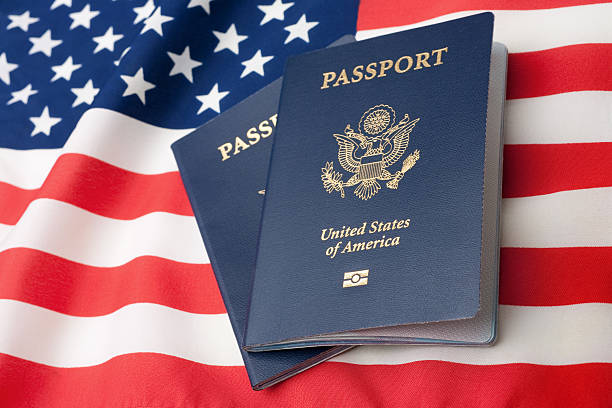The EB-1B visa, also known as the “Employment-Based First Preference Visa for Outstanding Professors and Researchers,” is one of the employment-based immigrant visas in the United States. It is designed for individuals who are recognized as outstanding in their academic field or have a record of extraordinary research contributions. The EB-1B visa is part of the EB-1 category, which includes several subcategories for individuals with extraordinary abilities.
To qualify for an EB-1B visa, applicants must demonstrate outstanding achievements as professors or researchers. Here are some of the key requirements:
- Outstanding Accomplishments: You must provide evidence of outstanding achievements in your academic field. This could include publications, awards, patents, and other forms of recognition.
- Employment Offer: You must have a job offer from a U.S. employer. This employer must be a university, college, or a private company that employs at least three full-time researchers.
- Permanent Employment: The job offer must be for a permanent, tenure-track position or a long-term research position.
- International Recognition: You should have substantial international recognition for your work. This can be demonstrated through recommendation letters, citations of your work, and other forms of recognition.
- Three-Year Experience: In some cases, applicants must have at least three years of teaching or research experience in their academic field.
EB-1B visa applicants do not need to go through the labor certification process, which is typically required for other employment-based visas, making it a faster and more straightforward option for obtaining permanent residency in the United States.
Table of Contents
How to apply for an EB-1B visa?
Applying for an EB-1B visa involves several steps, and it’s essential to follow the process carefully to increase your chances of approval. Here’s a general outline of the application process for an EB-1B visa:
- Determine Eligibility:
- Ensure that you meet the eligibility criteria for the EB-1B visa. This includes having outstanding accomplishments in your academic field and a job offer from a U.S. employer in a permanent research or teaching position.
- Prepare Supporting Documents:
- Gather documentation that demonstrates your outstanding achievements and international recognition. This may include:
- Published research papers, articles, or books.
- Awards, honors, or prizes in your field.
- Patents or innovations.
- Recommendation letters from experts in your field.
- Evidence of your work’s impact and influence.
- Work with your employer to obtain a job offer letter that outlines the terms of your employment, including your salary, duties, and the permanent nature of the position.
- Gather documentation that demonstrates your outstanding achievements and international recognition. This may include:
- Form I-140 Petition:
- Your U.S. employer will file a Form I-140, Immigrant Petition for Alien Worker, on your behalf with the U.S. Citizenship and Immigration Services (USCIS). This form is used to establish your eligibility for the EB-1B visa.
- Ensure that all required supporting documentation and filing fees are included with the I-140 petition.
- Processing and Approval:
- USCIS will review your I-140 petition. If they have any questions or require additional information, they may issue a Request for Evidence (RFE). It’s crucial to respond to any RFE in a timely and comprehensive manner.
- Once your I-140 petition is approved, you will receive an approval notice.
- Adjustment of Status or Consular Processing:
- If you are already in the United States, you can apply for adjustment of status to become a lawful permanent resident. This process involves filing Form I-485, Application to Register Permanent Residence or Adjust Status.
- If you are outside the United States, you will need to go through consular processing at a U.S. embassy or consulate to obtain an immigrant visa.
- Wait for a Visa Number (Priority Date):
- Depending on visa availability and your country of origin, you may need to wait for a visa number to become current before proceeding with the adjustment of status or consular processing.
- Attend an Interview:
- If required, attend an interview at a USCIS office or a U.S. embassy or consulate as part of the application process.
- Receive a Green Card:
- Once your application is approved, you will receive a green card, granting you permanent residency in the United States.
How to apply for an EB-1 visa?
The EB-1 visa category includes several subcategories, each designed for individuals with extraordinary abilities in different fields. Here’s a general overview of how to apply for an EB-1 visa, which covers all subcategories:
- Determine Eligibility:
- Determine which subcategory of the EB-1 visa you qualify for. The three primary subcategories are:
- EB-1A: Extraordinary Ability (for individuals with extraordinary ability in the sciences, arts, education, business, or athletics).
- EB-1B: Outstanding Professors and Researchers (for outstanding professors and researchers).
- EB-1C: Multinational Executives and Managers (for multinational executives or managers).
- Make sure you meet the specific eligibility criteria for the subcategory you are applying under.
- Determine which subcategory of the EB-1 visa you qualify for. The three primary subcategories are:
- Gather Supporting Documentation:
- Collect and prepare a robust portfolio of supporting documents that demonstrate your extraordinary abilities or qualifications. This may include:
- Letters of recommendation from experts in your field.
- Awards, honors, or recognitions.
- Publications, articles, or books.
- Evidence of significant contributions to your field.
- Employment history and job descriptions (for EB-1C).
- Proof of a qualifying relationship with the U.S. employer (for EB-1C).
- Collect and prepare a robust portfolio of supporting documents that demonstrate your extraordinary abilities or qualifications. This may include:
- Form I-140 Petition:
- Your U.S. employer (if applicable) or you, as the beneficiary, will need to file Form I-140, Immigrant Petition for Alien Worker, with the U.S. Citizenship and Immigration Services (USCIS). The form should specify the subcategory under which you are applying (EB-1A, EB-1B, or EB-1C).
- Include all required supporting documentation and filing fees with the I-140 petition.
- USCIS Review and Approval:
- USCIS will review your I-140 petition and supporting documents. If necessary, they may issue a Request for Evidence (RFE) for additional information.
- Once your I-140 petition is approved, you will receive an approval notice.
- Adjustment of Status or Consular Processing:
- Depending on your location, you will need to either apply for adjustment of status to become a permanent resident if you are already in the United States or go through consular processing at a U.S. embassy or consulate if you are outside the U.S.
- Attend an Interview (if required):
- Attend an interview at a USCIS office or U.S. embassy or consulate, if it is part of the application process.
- Wait for a Visa Number (Priority Date):
- Some subcategories of the EB-1 visa may have a waiting period for visa number availability. Check the Visa Bulletin to determine when a visa number becomes current.
- Receive a Green Card:
- Once your application is approved, you will be granted a green card, providing you with permanent residency in the United States.

Oliver is a professional blogger and a seasoned business and finance writer. With a passion for simplifying complex financial topics, he provides valuable insights to a diverse online audience. With four years of experience, Oliver has polished his skills as a finance blogger.



